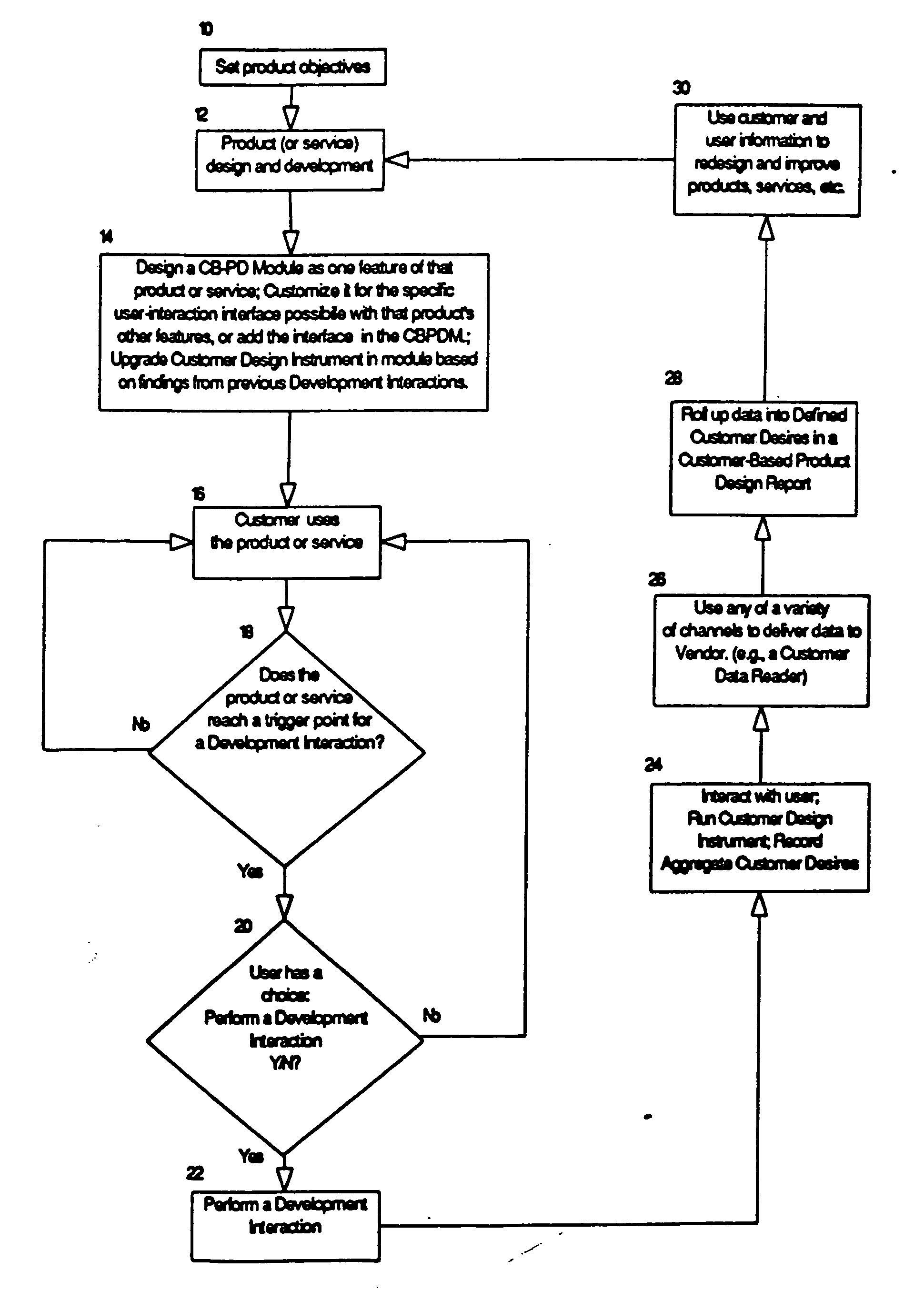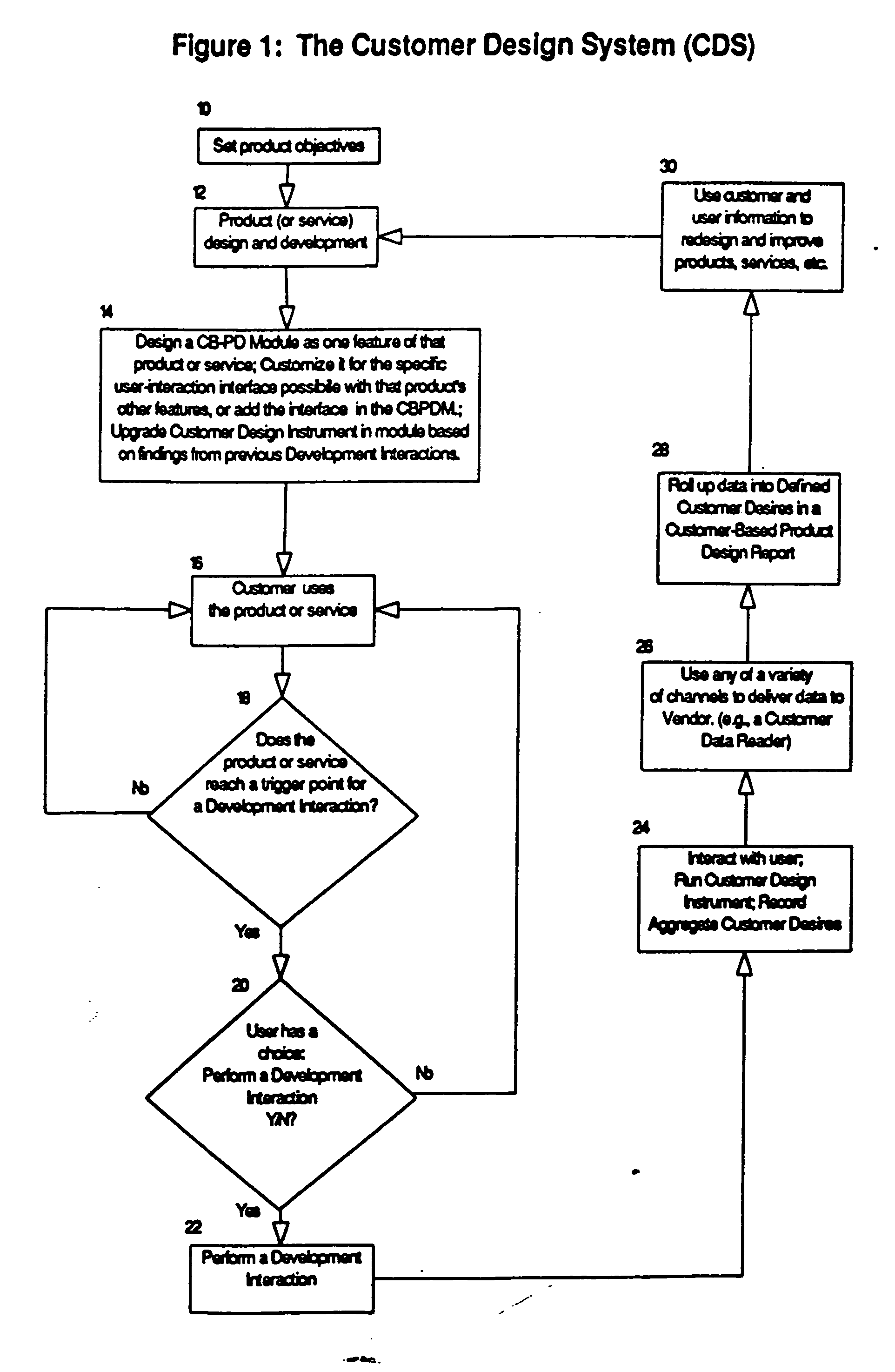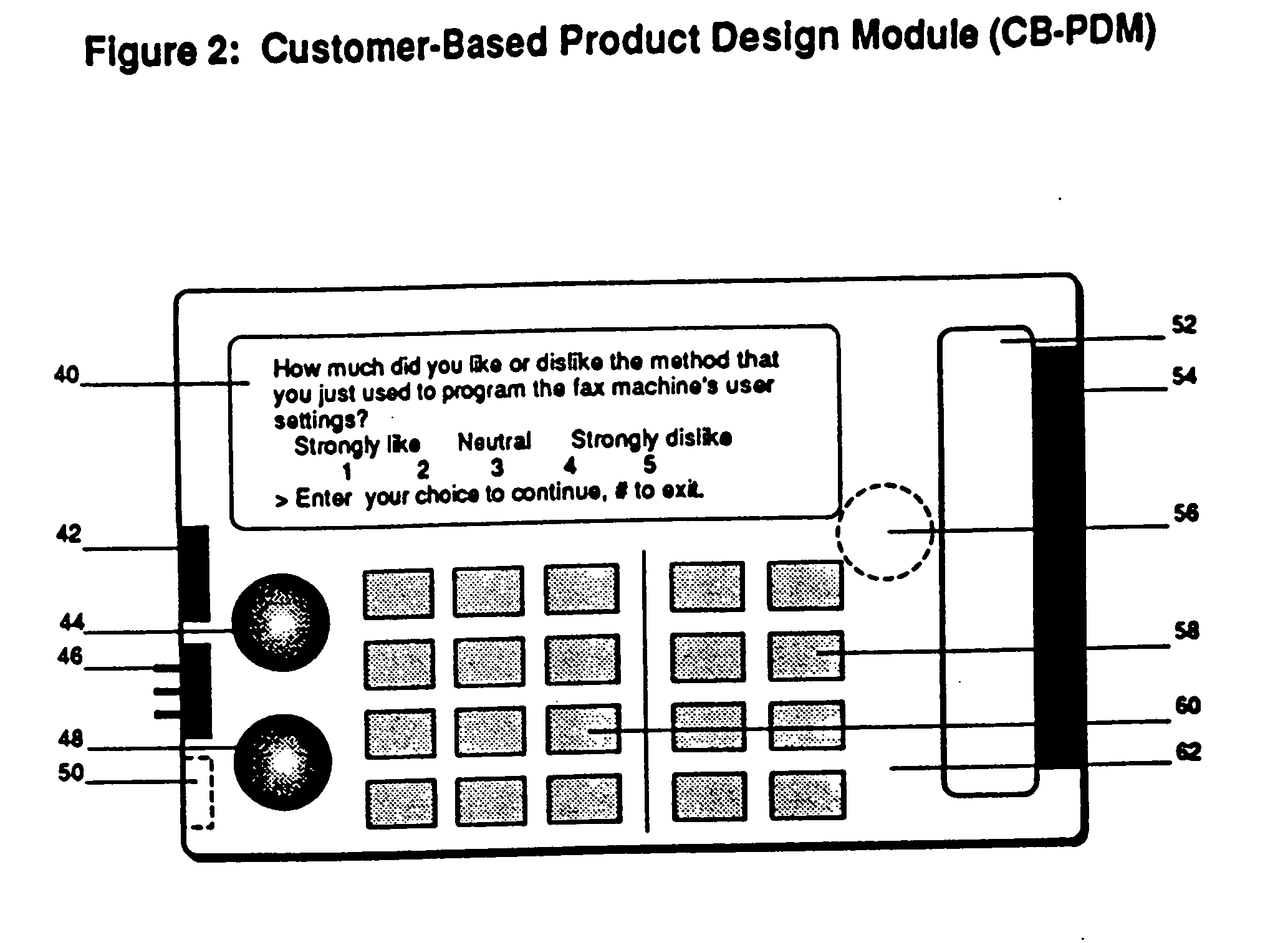Customer-based product design module
a product design and customer technology, applied in the field of customer-based product design modules, can solve the problems of difficult to assess complex thinking skills, difficult to change the attitude toward tasks, and still takes 30 days or more to run many types of meaningful studies, so as to improve the performance and effectiveness of customers, improve market share and profits, and increase the ability of customers to respond faster and more accurately
- Summary
- Abstract
- Description
- Claims
- Application Information
AI Technical Summary
Benefits of technology
Problems solved by technology
Method used
Image
Examples
Embodiment Construction
Components of this Invention
[0132] To facilitate the description of the invention, it is worthwhile to define some conventions solely for this purpose. These conventions are somewhat arbitrary and should not be construed as limiting to the generality of the invention. For the purpose of this description: [0133] (a) Customer Directed Product (CDP): An interactive product includes a CB-PD Module (which may be attached to a product or built into it); a CDP interacts with the Customer, or the Customer may initiate interactions with a CDP; these interactions are by means of the CB-PD Module. [0134] (b) Customer Design System (CDS) is the overall, interactive system by which the Customer provides design information to a Vendor. [0135] (c) Customer Design Instrument (CDI) is a specific set of Customer Probes (CP) that are intended to elicit the raw data, which are called Aggregate Customer Desires (ACD). [0136] (d) Customer Probes (CP) are the prompts, questions, etc stored in a CB-PD Mo...
PUM
 Login to View More
Login to View More Abstract
Description
Claims
Application Information
 Login to View More
Login to View More - R&D
- Intellectual Property
- Life Sciences
- Materials
- Tech Scout
- Unparalleled Data Quality
- Higher Quality Content
- 60% Fewer Hallucinations
Browse by: Latest US Patents, China's latest patents, Technical Efficacy Thesaurus, Application Domain, Technology Topic, Popular Technical Reports.
© 2025 PatSnap. All rights reserved.Legal|Privacy policy|Modern Slavery Act Transparency Statement|Sitemap|About US| Contact US: help@patsnap.com



